Anyone who has visited Tuscany during the summer has surely already heard of the Palio di Siena. It is indeed the most famous historical horse race in Italy. Although it is not an event organised to attract tourists, if you are on holiday nearby, you absolutely cannot miss it! Find out everything you need to know about the Palio with us.

What is the Palio di Siena?
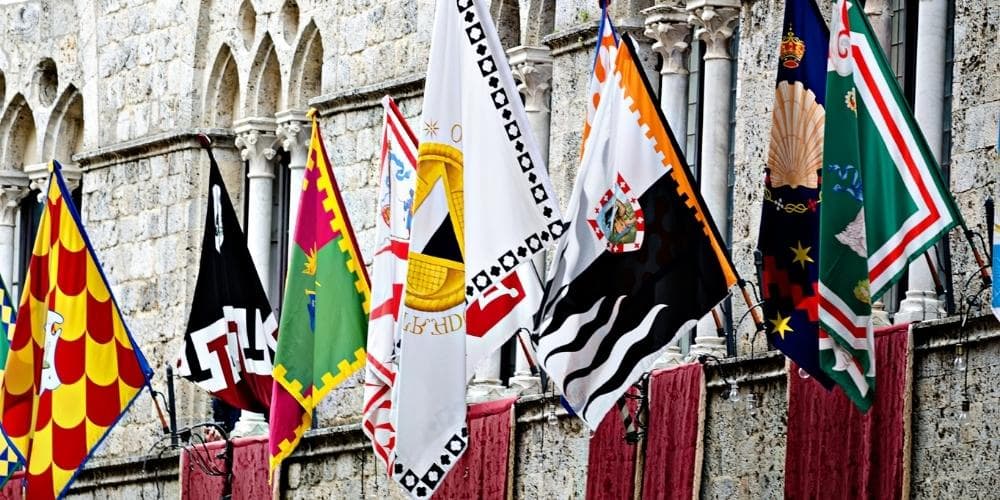
The flags of the Contrade
As its very name suggests, the Palio is held in Siena, Tuscany. It is an annual event, the most deeply felt by the local population. It is held on the dates of 2nd July and 16th August.
The Palio consists of a horse race, held in Piazza del Campo. On this occasion, the various Sienese Contrade, i.e. the areas into which the city is divided, compete for victory. Siena is in fact composed of no less than 17 Contrade, namely: Aquila, Bruco, Chiocciola, Civetta, Drago, Giraffa, Istrice, Leocorno, Lupa, Nicchio, Oca, Onda, Pantera, Selva, Tartuca, Torre, Valdimontone.
Each Contrada has its own coat of arms, distinguished by its colours. If, for example, you walk through town and notice a yellow and turquoise coat of arms, it means you are in the Contrada of the Tartuca. White and red are instead the colours of the Giraffa, yellow and red with turquoise lists those of the Chiocciola, and so on.
The history of the Palio di Siena has its roots in rather remote times. In fact, we know that the event took place as early as the 17th century. It is therefore a very important tradition for the inhabitants of the city: the contradaioli have participated in the life of the Contrada since childhood, working hard all year round in preparation for the Palio. This transport is very contagious and even those who are in town for a visit will certainly be involved.
How the Palio takes place

Piazza del Campo on the day of the Palio
As we have seen, the Palio di Siena is not a simple horse race. The event involves a large number of rules, customs and practices, which the contradaioli know perfectly well. Knowing them in advance also allows tourists to better understand the unfolding of the event and enjoy it more.
The first thing to know is that there is no accredited ticket office for the Palio. So how to participate? One has to contact the stage managers, the so-called palcaioli. The alternative is to get to know some of the tenants of the houses that overlook the Piazza del Campo.
The race, which is also called career, is held on two dates. The first is dedicated to the Madonna di Provenzano, on 2nd July, and is therefore called the Palio di Provenzano. The second instead is in honour of the Assumption of Mary, on 16th August, and is called the Palio dell'Assunta.
Only 10 of the 17 Sienese Contrade are allowed to take part. But which ones? The first 7 are those that did not run in the previous Palio. The remaining 3 are drawn during the day of the Tratta, i.e. three days before the actual race. On this occasion, the horses are also assigned to the various Contrade.
The day of the Palio
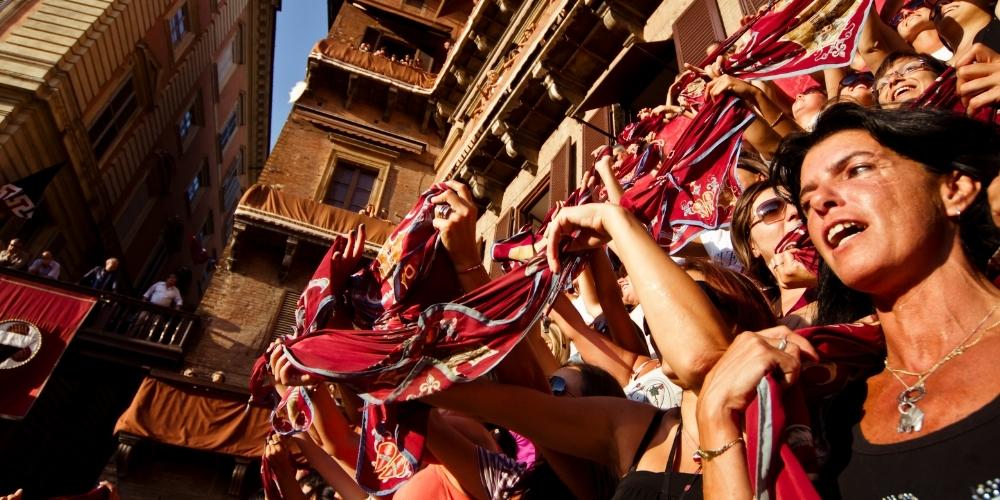
The Palio audience
Like any self-respecting event, the Palio di Siena includes a large number of activities and events. The festive day already opens at 8 a.m. at the chapel next to the Palazzo Comunale, for the celebration of the jockey's mass, “Messa del Fantino”. This is followed by the last of the various trial races (started in the previous days), known as 'la provaccia'.
At 10.30 a.m., again at the Town Hall, the “signing of the jockeys” takes place in the presence of the Mayor. This means that, from then on, no rider can be replaced.
The event continues at 3 p.m., when the blessing of the horses takes place at the Contrade. This rite is followed by a large historical procession, with more than 600 participants. The procession ends around 18:30 in Piazza del Campo. A firecracker burst is the signal for the horses to leave, which pass through the so-called Entrone.
The starting point of the race is the Mossa, a part of the square marked with ropes. This is where the Mossiere is located, i.e. the person who calls the Contrade in the order of the draw, making sure that there are no infringements. The first 9 Contrade are placed in order. The last remaining one, the tenth, enters after the draw: this is the signal for the start of the race.
It can happen, however, that the start is not valid. This happens if, for example, the jockeys do not respect the assigned position. If this happens, you have to start all over again! This is a real stage of the Palio, which can last a very long time.
The race
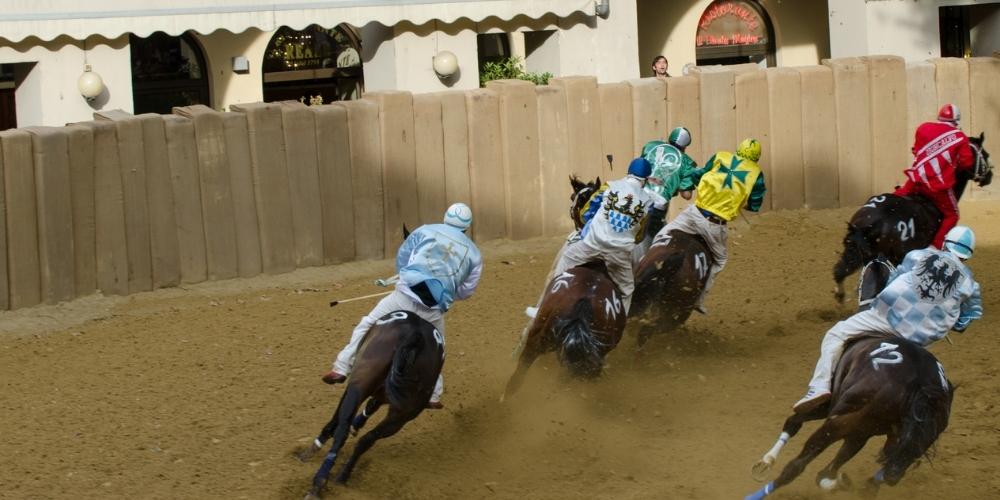
Horses running at the Palio
Once a valid start has been obtained, the Palio di Siena race begins. The horses have to run three laps of the square, trying to outdo each other in every way. There is no shortage of clashes, especially at the very tight San Martino bend.
The winner is the first horse to cross the finish line - with or without a jockey in the saddle! This determines the winning Contrada, to which the coveted prize is awarded: the Drappellone, a canvas painted from year to year by different artists.
Useful tips for attending the Palio
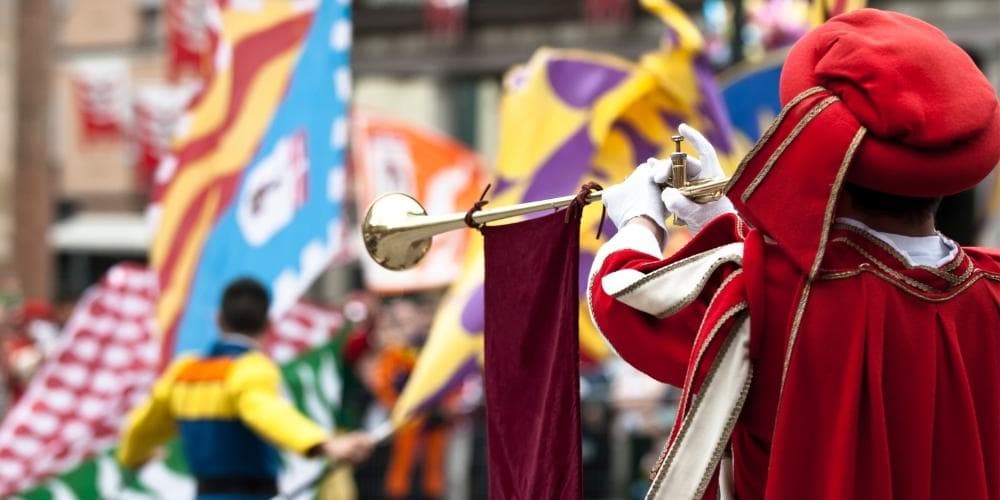
The Palio di Siena procession
You can watch the Palio di Siena race free of charge by reaching Piazza del Campo. In this case, it is advisable to get in at 16:30 at the latest. Those who wish to secure a place at the colonnini, i.e. at the edge of the track, will have to arrive even earlier: these are usually already occupied in the morning!
There is also the possibility of booking paid seats in the grandstands or on the balconies overlooking the square. In this case, we advise you to contact the APT of Siena. If, on the other hand, you wish to fully immerse yourself in the local atmosphere, you can contact the owners of the houses: they will not fail to offer you a taste of typical Sienese sweets!
About the author
Written on 22/06/2022


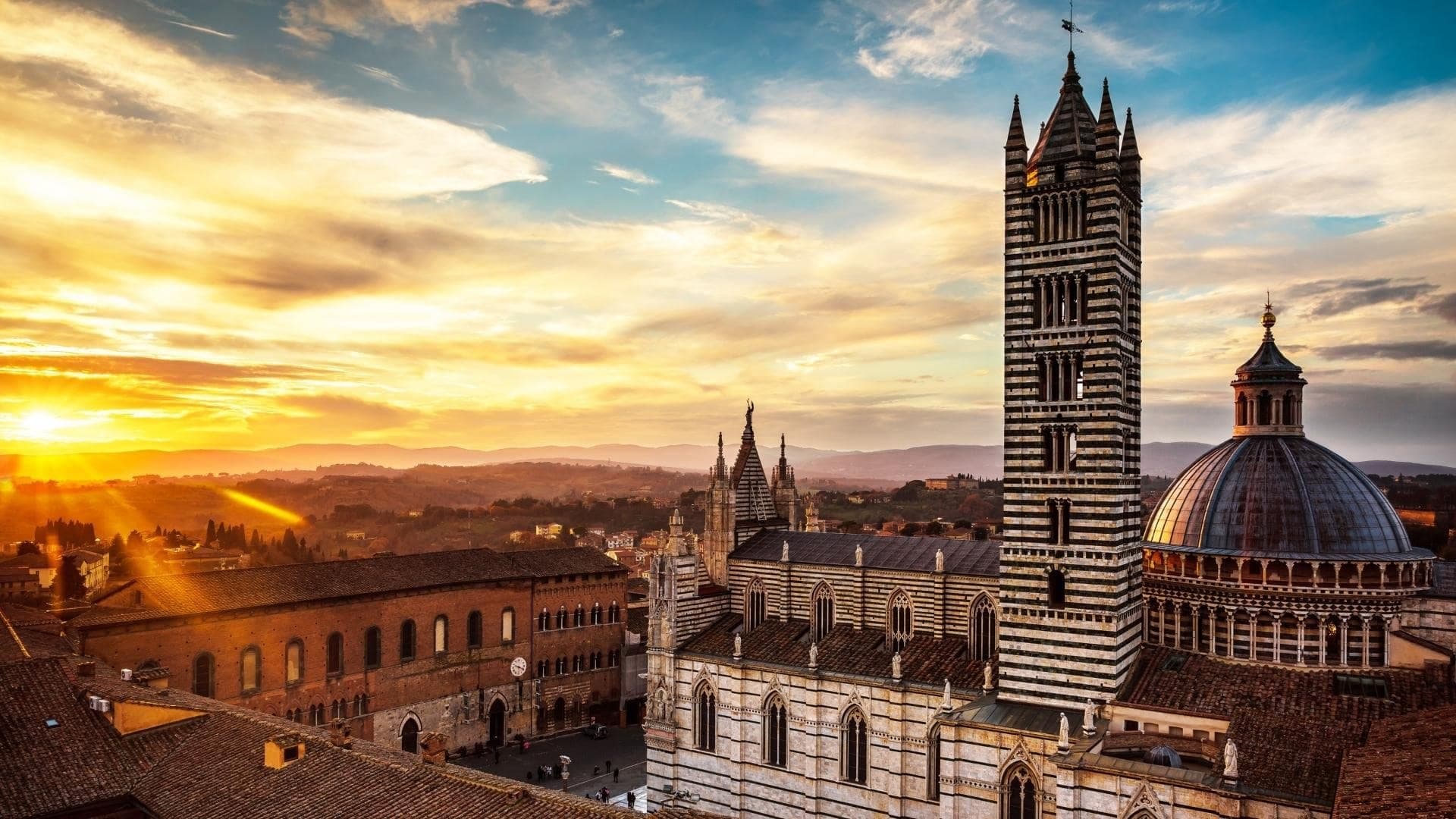
Martina Guelfi
What would summer in Tuscany be without the Palio di Siena? Discover with us all the secrets of Italy's most famous historic horse race.